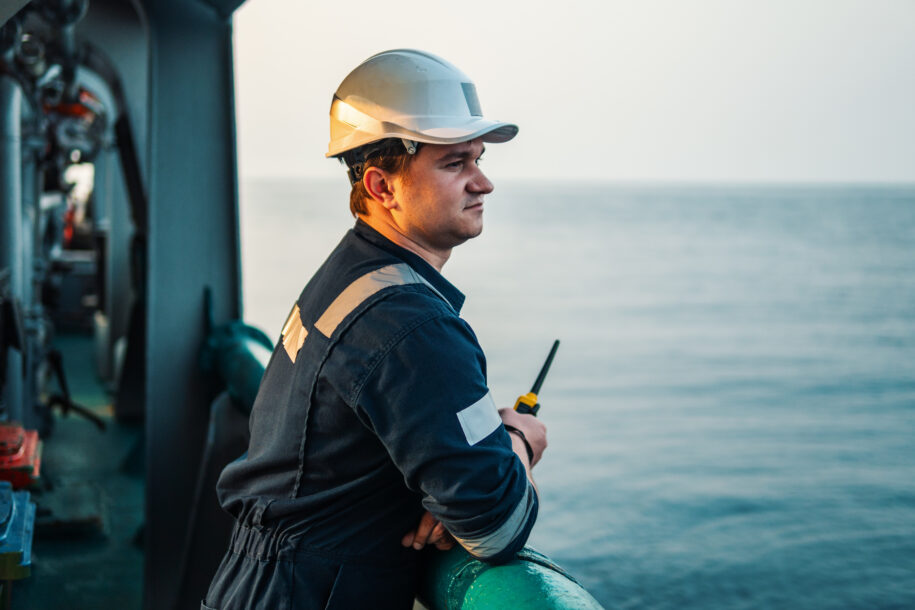SIRE 2.0: Transforming Safety Standards in LPG Tanker Vetting
The maritime industry continuously evolves to meet the demands of safety, efficiency, and environmental sustainability. One of the latest advancements in this domain is the introduction of SIRE 2.0 (Ship Inspection Report Programme 2.0), a next-generation approach to tanker vetting. For LPG tankers, this innovation represents a significant leap forward, complementing IMO Safety Standards by incorporating real-time, behavior-based assessments of tanker operations. This transformative shift ensures a holistic evaluation of safety practices, operational performance, and risk management.

What is SIRE 2.0?
Developed by the Oil Companies International Marine Forum (OCIMF), SIRE 2.0 builds on the foundation of the original SIRE program by focusing on behavior and performance. Unlike traditional inspections that rely heavily on checklists, SIRE 2.0 emphasizes dynamic, real-time evaluations. Inspectors assess not only the technical condition of the vessel but also the behavior and competency of the crew during operations.
For LPG tankers, this approach aligns seamlessly with IMO Safety Standards, enhancing the overall safety framework and ensuring compliance with international maritime regulations, including SOLAS, MARPOL, and the IGC Code.
Key Features of SIRE 2.0 in LPG Tanker Vetting
- Behavior-Based Assessments
A cornerstone of SIRE 2.0 is its focus on human behavior and decision-making. Inspectors observe how crew members handle day-to-day operations, emergencies, and safety protocols. This includes evaluating adherence to IMO Safety Standards during critical processes such as cargo handling and navigation.
By prioritizing behavior, SIRE 2.0 addresses the human element of maritime safety, which is often a critical factor in incidents. It ensures that crews are not just trained but are also consistently applying their knowledge in real-world scenarios. - Real-Time Data Collection
SIRE 2.0 leverages advanced technology to collect and analyze real-time data during inspections. This includes monitoring operational parameters, safety systems, and environmental controls. For LPG tankers, this ensures compliance with the IGC Code’s stringent requirements for cargo containment, pressure control, and ventilation systems.
Real-time insights allow operators to identify and rectify potential issues proactively, aligning with the proactive risk management philosophy of IMO Safety Standards. - Enhanced Operational Safety
Operational safety is a critical focus of SIRE 2.0. The program evaluates the implementation of safety management systems (SMS) and their effectiveness in daily operations. Inspectors assess emergency preparedness, including crew readiness for scenarios such as gas leaks or fires.
This complements IMO Safety Standards by ensuring that LPG tankers are not only equipped with the necessary safety systems but are also operated in a manner that minimizes risks to crew, cargo, and the environment. - Comprehensive Risk Management
SIRE 2.0’s holistic approach incorporates risk-based methodologies to identify vulnerabilities in tanker operations. For LPG tankers, this includes evaluating compliance with MARPOL’s environmental protection standards and SOLAS’s safety provisions.
By integrating risk management into the vetting process, SIRE 2.0 ensures that operators adopt a proactive stance on safety and sustainability, reinforcing the principles of IMO Safety Standards.
Benefits of SIRE 2.0 for LPG Tanker Vetting
The implementation of SIRE 2.0 offers several benefits for LPG tanker operations:
- Improved Safety Culture: By emphasizing behavior and real-time performance, SIRE 2.0 fosters a culture of safety and accountability among crews.
- Enhanced Compliance: The program’s alignment with IMO Safety Standards ensures comprehensive regulatory adherence, reducing the risk of non-compliance penalties.
- Operational Efficiency: Real-time assessments help operators identify inefficiencies and implement corrective actions promptly.
- Environmental Protection: By addressing operational risks and promoting best practices, SIRE 2.0 supports the sustainable transportation of LPG.
- Stakeholder Confidence: Demonstrating adherence to advanced safety protocols builds trust among charterers, regulators, and other stakeholders.
Challenges in Adopting SIRE 2.0
While SIRE 2.0 represents a significant improvement, its adoption comes with challenges:
- Training and Adaptation: Crews and inspectors require training to understand and implement the new evaluation criteria effectively.
- Technological Investments: Operators must invest in technologies to support real-time data collection and analysis.
- Global Standardization: Ensuring uniform implementation across regions can be challenging due to varying regulatory environments.
Overcoming these challenges requires collaboration among industry stakeholders, including shipowners, regulators, and the IMO. By working together, the industry can fully realize the potential of SIRE 2.0 and its alignment with IMO Safety Standards.
The Way Forward
The introduction of SIRE 2.0 marks a new era in tanker vetting, setting higher benchmarks for safety, performance, and sustainability. For LPG tankers, this approach enhances compliance with IMO Safety Standards, ensuring that the transportation of liquefied gases is safe, efficient, and eco-friendly.
To maximize the benefits of SIRE 2.0, operators should:
- Invest in Training: Equip crews with the knowledge and skills to meet the program’s behavioral and operational requirements.
- Leverage Technology: Utilize advanced monitoring and data analysis tools to support real-time assessments.
- Promote Collaboration: Share best practices and insights across the industry to drive continuous improvement.
In conclusion, SIRE 2.0 is a transformative step forward in LPG tanker vetting. By complementing IMO Safety Standards, it ensures that the maritime industry remains at the forefront of safety and sustainability. As the program gains traction, it will undoubtedly contribute to a safer and more resilient future for global energy transportation.
